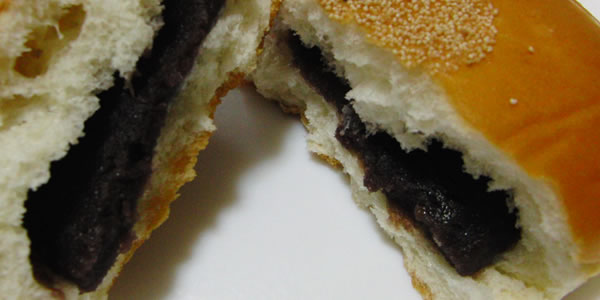An(Anko) or Azuki Bean Paste for Japanese Sweets

Japanese sweets are called "Wagashi (和菓子)" and they are quite different from western-style sweets. Generally, traditional Japanese sweets are made with pastes of sweet beans, white beans, green beans, and red beans; all called "An (餡)" or Anko (餡子)) in Japanese, derived from the word meaning “filling.” In particular, the red bean called Azuki (小豆) is so popular that people usually refer to the Azuki paste as An. Recently, pumpkin or sweet potatoes are also used for "An" as well as beans. However, the Azuki paste is by far the most popular.
Which do you prefer? Tsubu-an or Koshia-an?
For the An of Azuki paste, there are two types that are different in texture, one is Tsubu-an (つぶあん) paste containing seed coats, and the other is Koshi-an (こしあん) paste where the seed coats are all removed. Actually, this difference in texture is a concern for Japanese people, which sometimes brings a heated discussion to find which type of An is better, like talking about peanut butter types, cranky or smooth.
For An sweets like Manju (饅頭), Daifuku (大福) , and Anpan (あんぱん), both Tsubu-an and Koshi-an types are usually sold at shops for offering customers choice. For Taiyaki, (たいやき fish-shaped cake filled with An) Koshi-an type is rarely available, somehow, that always maks Koshi-an lovers wonder.

Koshi-an Anpan. Check the label on the package to telling Koshi-an or Tsubu-an when buying the one.
Extra Story | Anpan, a Japanese sweet created by a last samurai.
Anpan is a sweet bun filled with "An", the sweet red bean(Azuki) paste. Bread is called "Pan" in Japanese, so An-pan means "bread containing Azuki paste. It sounds a bit exaggerated, but the invention of Anpan was a help opening the door to Japanese people to accept western culture more than 150 years ago.
When the Edo period was over, many Samurai soldiers lost their jobs, and Kimura Yasubei, the inventor of An-pan, was one of those Last Samurai. After losing his role as a Samurai, he opened a bakery because he predicted that it was the time for Japanese people to accept the more western culture.
Kimuraya, the bakery Kimura Yasubei opened, still exists in Ginza, Tokyo, always crowded with people coming to buy Anpan. Anpan is now sold event at supermarkets and convenience stores, so why not try the one to enjoy the taste made by the Last Samurai.

